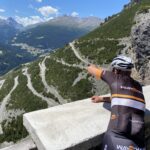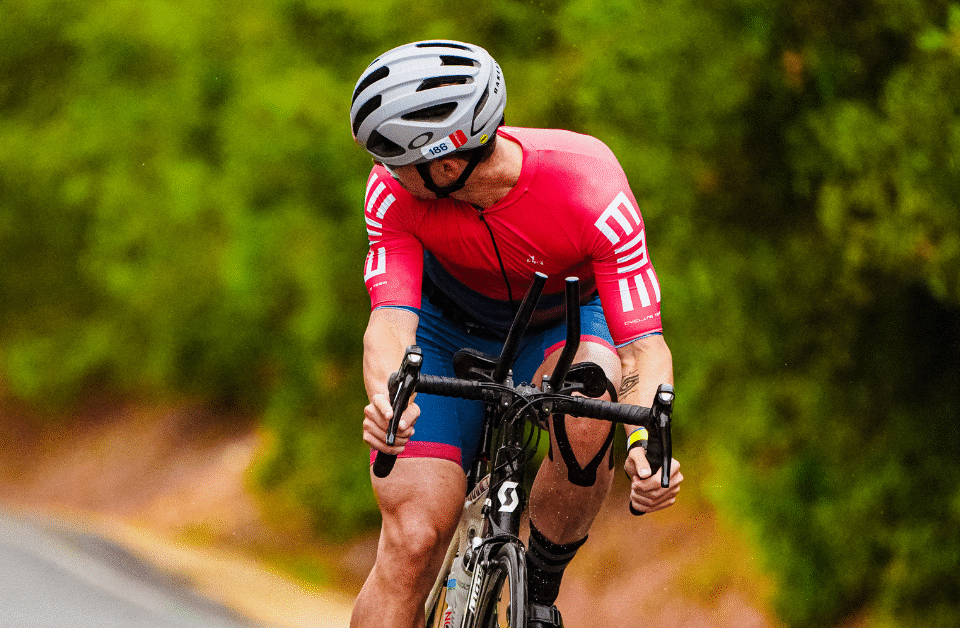
Training based on HRV – what is it and how does it work?
7 July 2025
How to Train for Your Next Century Ride While Closing Your Biggest Deal
8 July 2025
How to scale your business without sacrificing family time, personal health, or the cycling passion that keeps you sane—and why growing after 40 might be your greatest competitive advantage.
The guilt hits you every single time.
You’re in the middle of a productive work session when your daughter asks if you can help with homework. You want to say yes, but there’s a proposal due tomorrow. You’re torn between being the present parent you want to be and the successful entrepreneur you’ve worked so hard to become.
Or maybe it’s Saturday morning. You’ve been looking forward to your weekend ride all week, but your business partner sends an “urgent” message that could wait until Monday. Do you take care of business or take care of yourself?
If you’re an entrepreneur over 40 with kids, this internal tug-of-war is exhausting. Every decision feels like you’re disappointing someone—your family, your business, or yourself. The guilt of constant compromise can be more draining than the actual work.
But here’s what I’ve discovered after working with hundreds of successful entrepreneurs who’ve navigated this exact challenge: the guilt isn’t coming from your choices. It’s coming from a flawed assumption that growth requires sacrifice.
What if I told you that the most sustainable business growth actually comes from honoring all your priorities—family, health, and passion—rather than sacrificing them? What if your cycling habit, your family commitments, and your business success could actually reinforce each other?
At 40+, you have advantages younger entrepreneurs don’t possess. You have experience, wisdom, established relationships, and a clearer sense of what truly matters. The key is building a growth strategy that leverages these advantages instead of fighting against your values.
The Myth of the Sacrificial Entrepreneur
Somewhere along the way, we bought into a toxic narrative: successful entrepreneurs must sacrifice everything for their business. Sleep, health, family time, personal interests—all must be offered on the altar of growth.
This narrative is not only false, it’s counterproductive.
Research from Harvard Business School shows that entrepreneurs who maintain work-life integration actually achieve higher revenue growth and report greater life satisfaction than those who adopt an “all work, all the time” approach. More importantly, businesses built by balanced entrepreneurs tend to be more sustainable and less dependent on the founder’s constant presence.
Think about cycling for a moment. When you’re training for a long ride, you don’t improve by hammering every single day. You get stronger through a strategic combination of intensity, recovery, and consistency. Push too hard without recovery, and you end up injured or burned out. The same principle applies to business growth.
The entrepreneurs who achieve sustainable success after 40 understand that growth isn’t about doing more—it’s about doing the right things with greater efficiency and intention.
The Integration Advantage: Why 40+ is Your Sweet Spot
Before diving into the tactical approach, let’s reframe your age and responsibilities as competitive advantages rather than limitations.
- Experience Efficiency: At 40+, you’ve seen enough business cycles to spot patterns quickly. You can assess opportunities and risks faster than younger entrepreneurs who need to learn through trial and error. This pattern recognition allows you to make better decisions with less time investment.
- Network Leverage: You have established relationships that took decades to build. A single phone call from you can accomplish what might take a younger entrepreneur months of networking to achieve.
- Clarity of Purpose: You know what matters to you. This clarity eliminates the need to chase every shiny opportunity, allowing you to focus on growth strategies that align with your values.
- Resource Availability: Most 40+ entrepreneurs have more capital and credit access than they did in their 20s and 30s. This means you can invest in systems, technology, and team members that create leverage.
- Urgency Without Panic: You understand that time is valuable, creating productive urgency without the desperation that leads to poor decisions.
The key is designing your growth strategy to maximize these advantages while protecting the things that matter most to you.
The Four Pillars of Guilt-Free Growth
Pillar 1: Values-Aligned Business Design
The Challenge: Most entrepreneurs build their business first, then try to fit their life around it. This creates constant conflict between business demands and personal values.
The Solution: Design your business model to support your life priorities from the beginning.
Start with your non-negotiables. For many cycling entrepreneurs, these might include:
- Family dinner together 5 nights per week
- Weekend rides of 2+ hours
- Annual family vacation without work interruption
- Being present for kids’ important events
- Maintaining physical and mental health
Once you’ve identified your non-negotiables, design your business model around them:
Premium Positioning: Instead of competing on price, position yourself as a premium provider. This allows you to work with fewer clients at higher margins, creating more time freedom while increasing revenue.
Productized Services: Package your expertise into scalable offerings rather than selling time for money. Create frameworks, systems, and methodologies that can be delivered efficiently or even partially automated.
Strategic Partnerships: Leverage your network to create referral partnerships and joint ventures. Use your relationships to grow faster with less personal time investment.
Geographic Flexibility: Design your business to work remotely or with minimal travel. This protects family time and allows you to work from anywhere—including that cycling destination you’ve always wanted to visit.
One client, a 44-year-old consultant and weekend cyclist, restructured his business from hourly consulting to a premium monthly retainer model. He reduced his client roster from 15 to 6, increased his revenue by 30%, and gained back 15 hours per week for family and cycling.
Pillar 2: Energy-Based Productivity Systems
The Challenge: Traditional productivity advice assumes unlimited energy and treats all hours as equal. At 40+, you know this isn’t true.
The Solution: Build productivity systems around your natural energy rhythms and protect your peak performance windows.
Map Your Energy Patterns: Track your energy levels every 2 hours for a week. Most people have 2-3 high-energy windows daily. Identify yours and protect them fiercely.
Peak Performance Blocks: Schedule your most important business activities during high-energy windows. For many entrepreneurs, this means strategic work in the morning, relationship building in early afternoon, and administrative tasks in lower-energy periods.
Energy Investment Strategy: Like financial investing, put your energy into activities with the highest return. Strategic planning, key relationship calls, and creative work deserve your peak energy. Email and routine tasks don’t.
Recovery Integration: Just as cycling requires recovery days, sustainable business growth requires energy recovery. Build recovery into your schedule—not as an afterthought, but as a strategic necessity.
Here’s a sample energy-optimized daily structure:
6:00-7:30 AM: Cycling or exercise (energy creation) 8:00-11:00 AM: Strategic work (peak cognitive performance) 11:00 AM-12:00 PM: Relationship calls (high energy, interpersonal skills) 12:00-1:00 PM: Lunch and mental break 1:00-3:00 PM: Operational tasks (moderate energy required) 3:00-4:00 PM: Administrative work (low energy acceptable) 4:00 PM onward: Family time (energized presence)
Pillar 3: Leverage and Systematization
The Challenge: Most entrepreneurs become the bottleneck in their own business, believing they must personally handle everything important.
The Solution: Build systems and leverage that allow the business to grow without constant personal involvement.
The Delegation Framework:
- Eliminate: What activities don’t actually need to be done?
- Automate: What can technology handle?
- Delegate: What can others do (even if not exactly as you would)?
- Elevate: What requires your unique expertise and should remain with you?
Process Documentation: Create systems for everything you do repeatedly. This isn’t just for efficiency—it’s for freedom. When processes are documented, they can be delegated or improved by others.
Technology Leverage: Invest in tools that multiply your effectiveness. CRM systems, scheduling software, project management tools, and automation platforms can handle routine tasks that currently consume your time.
Team Building Strategy: Hire for your weaknesses and delegate your strengths when possible. Your time should be spent on activities that generate the highest value and that only you can do.
Strategic Outsourcing: Consider outsourcing entire functions (bookkeeping, marketing execution, customer service) rather than trying to manage everything internally.
A 42-year-old agency owner implemented these principles and reduced his weekly work hours from 65 to 35 while growing revenue by 50%. The secret was building systems that could operate without his constant presence.
Pillar 4: Integration Rituals and Boundaries
The Challenge: Without clear boundaries, work expands to fill all available time, creating constant guilt about not being fully present anywhere.
The Solution: Create intentional rituals that allow you to be fully present in each area of your life.
Transition Rituals: Develop specific activities that help you shift mental modes:
- Work to Family: 10-minute decompression walk or bike ride before entering the house
- Family to Work: Morning routine that creates energy and focus
- Work to Cycling: Gear change ritual that signals mental shift to personal time
Sacred Boundaries: Establish and communicate non-negotiable time blocks:
- Family Golden Hour: First hour after work is device-free family time
- Cycling Sanctuary: Weekend rides are protected unless there’s a true emergency
- Work Focus Blocks: Predetermined hours when you’re fully available for business
Communication Protocols: Set clear expectations with family, team, and clients:
- Emergency Definition: What constitutes a true emergency that can interrupt protected time?
- Response Time Expectations: When can people expect to hear back from you?
- Availability Windows: When are you accessible and when are you not?
Weekly Integration Planning: Sunday evening, plan the upcoming week to ensure all priorities get protected time. This prevents reactive scheduling that sacrifices important activities.
The Practical Implementation Roadmap
Month 1: Foundation Setting
- Week 1: Complete values assessment and identify non-negotiables
- Week 2: Map energy patterns and design optimal daily structure
- Week 3: Audit current business model for values alignment
- Week 4: Establish basic boundaries and communication protocols
Month 2: System Development
- Week 1: Document your three most time-consuming business processes
- Week 2: Implement first automation or delegation
- Week 3: Create transition rituals for work/family/cycling shifts
- Week 4: Establish weekly planning ritual
Month 3: Optimization and Scaling
- Week 1: Analyze what’s working and what needs adjustment
- Week 2: Implement second wave of delegation or systematization
- Week 3: Refine boundaries and transition rituals
- Week 4: Plan next quarter’s growth strategies using new framework
Handling the Inevitable Challenges
When Family Needs Conflict with Business Opportunities
The Old Way: Choose one and feel guilty about the other.
The New Way: Look for creative integration solutions. Can you include family in the business opportunity? Can you reschedule to honor both priorities? Can you delegate part of the opportunity while remaining present for family?
When Cycling Time Gets Squeezed
The Old Way: Skip rides and promise to “catch up later.”
The New Way: Treat cycling time as a business investment. The mental clarity, stress relief, and energy boost from cycling often lead to breakthrough business insights. Protect this time as you would an important client meeting.
When Growth Opportunities Require More Time
The Old Way: Say yes to everything and work more hours.
The New Way: Apply the leverage test. Does this opportunity allow you to work on your business rather than in it? Does it align with your values and long-term vision? If not, it’s probably a distraction disguised as an opportunity.
The Compound Effect of Guilt-Free Growth
Here’s what happens when you implement this approach consistently:
Year 1: You establish systems and boundaries that reduce guilt and increase presence in all areas of life.
Year 2: Your business grows more efficiently because you’re working on high-impact activities during peak energy windows.
Year 3: Your team and systems handle increasing portions of the business, giving you more strategic freedom.
Year 5: You have a business that supports your ideal lifestyle rather than consuming it.
But the real magic happens in the daily experience. When you’re riding your bike, you’re fully present for the experience instead of feeling guilty about work. When you’re with family, you’re engaged rather than distracted by business concerns. When you’re working, you’re focused and efficient rather than resentful about time away from other priorities.
The Legacy You’re Actually Building
At the end of your career, you won’t be remembered for the deals you closed while missing family dinners. You’ll be remembered for being present, engaged, and energized across all areas of your life.
Your children will remember a parent who demonstrated that success doesn’t require sacrifice—that you can build something meaningful while maintaining your health, relationships, and passions.
Your cycling partners will remember someone who stayed committed to their passion even as business demands increased.
Your business partners and clients will remember working with someone who brought energy, creativity, and strategic thinking to every interaction—because you were taking care of yourself outside of work.
Your Next Ride Starts Now
The guilt-free approach to business growth isn’t about doing less. It’s about doing the right things with greater intention and efficiency. It’s about building a business that serves your life rather than consuming it.
Start with one simple change: identify your biggest source of guilt and design a system to eliminate it. Maybe it’s scheduling protected cycling time in your calendar like a client meeting. Maybe it’s establishing an evening routine that allows you to be fully present with family. Maybe it’s delegating one recurring task that’s been consuming your energy.
Remember, every successful cycling climb starts with a single pedal stroke. Your guilt-free business growth journey starts with a single intentional decision to honor all your priorities rather than choosing between them.
The road ahead is challenging but incredibly rewarding. You don’t have to choose between business success and personal fulfillment anymore.
It’s time to design a business that supports the life you actually want to live.
Thinking about cycling training? If you want to take your riding to the next level, we have a great option for you:
- Individual coaching – work one-on-one with an experienced coach who will continuously adjust your training load to your needs and support your development as a cyclist.

